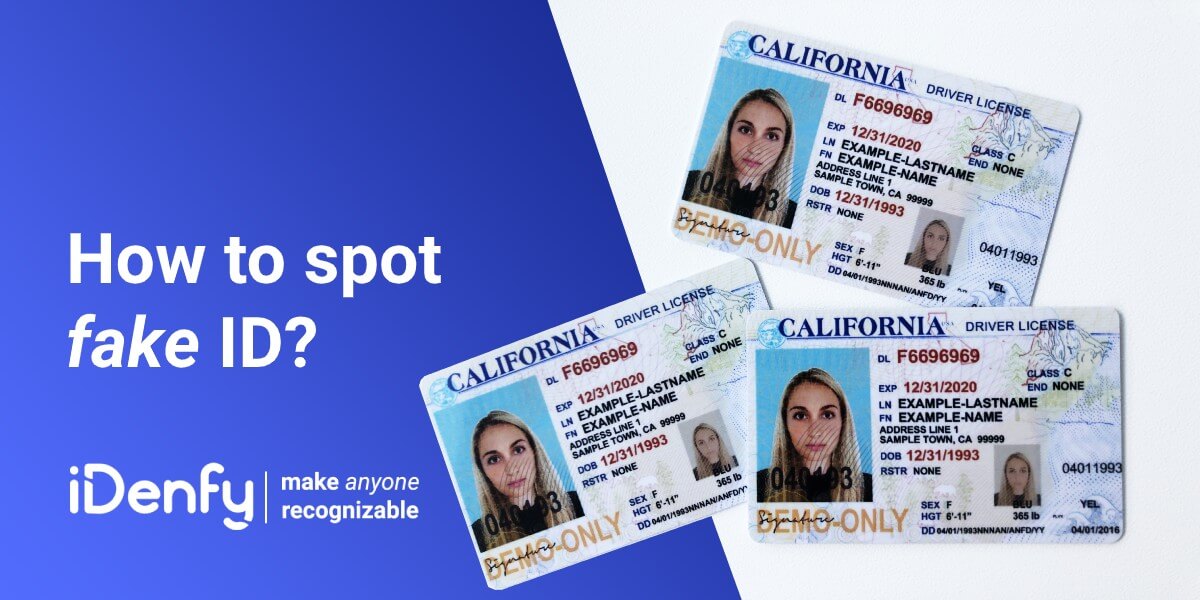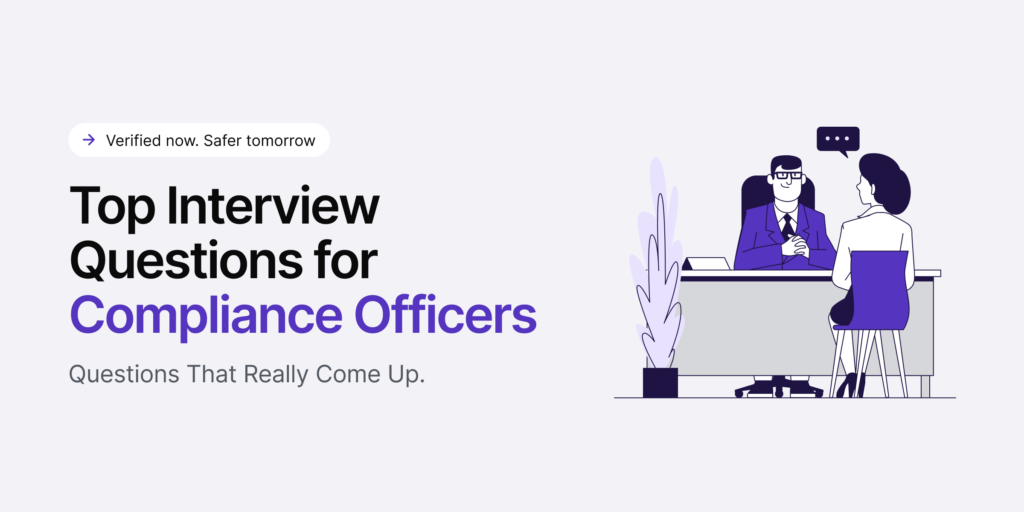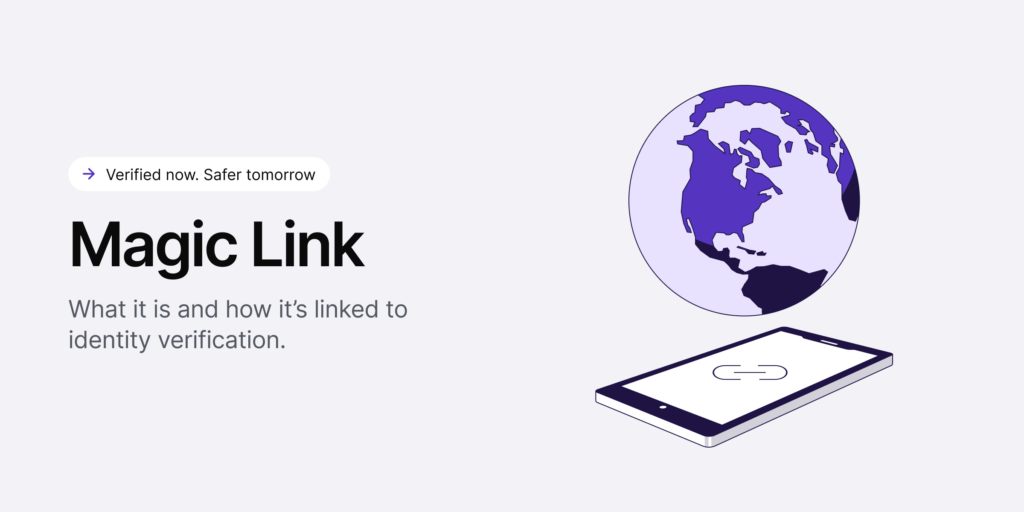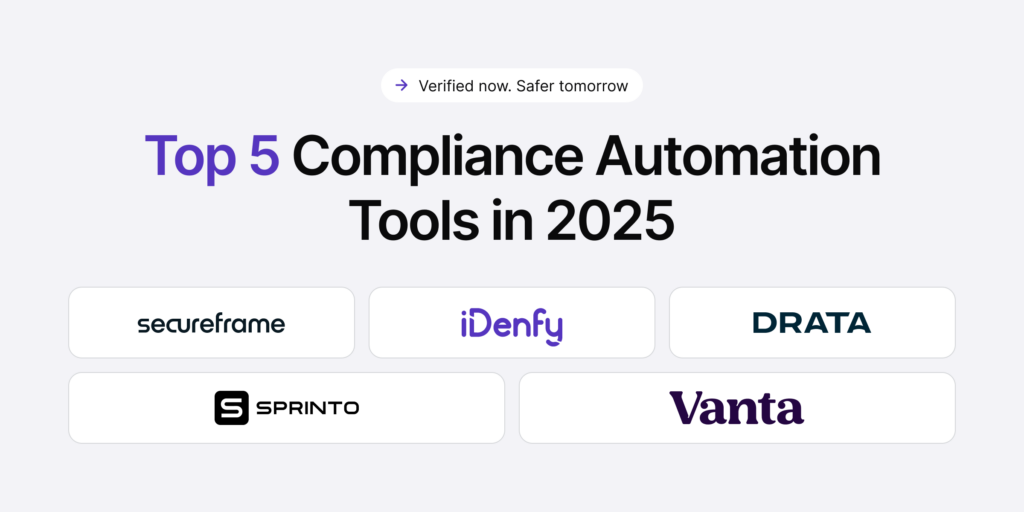Identity document forgery has become a serious concern worldwide. Fraudsters have excessively copied and modified government-issued identity documents to substantiate fake claims and carry out various illegal activities. Fake IDs are also a popular way for minors to access age-restricted items, such as vapes or adult-only content online. For this reason, proper identity verification and authentication processes are now vital not only for walk-in liquor stores but also for online platforms that sell these types of items.
According to Europol, criminals invest heavily in the production of counterfeit IDs to support the smuggling of migrants, the laundering of dirty cash, terrorism, and human trafficking. That’s why it’s only natural that document forgery is linked to all sorts of crimes, as fraudsters need to hide their true identities to remain undetected. Various techniques, like discrepancies between the person uploading or showing the document and their actual picture on the document, can be a red flag and a sign that it’s forged or borrowed.
In this post, we will guide you on how to spot a fake ID, the types of fake IDs, and how you can assess them properly. We’ll also explore how businesses can prevent identity theft more effectively.
Why are Fake IDs Dangerous?
Fake ID documents can consist of stolen names or addresses and are typically linked to other crimes. Consequently, they create serious threats, undermining the overall integrity of the financial market. For example, if a fake ID is accepted during an identity verification check on a fintech platform, the fraudster has a green light to open a new account there and continue their fraudulent activities, which can even lead to money laundering.
That’s why businesses must stay vigilant to protect their financial transactions and customers from fraud, data breaches, and similar crimes. Traditional establishments also need to know what a fake document looks like to prevent minors from accessing items intended for adults. Of course, the level of scrutiny varies, and a quick check by a cashier will be simpler compared to a border control using advanced biometric scanners. However, the first step in spotting fakes is understanding what a valid ID looks like.
What are the Signs of a Fake ID Document?
The main suspicious signs of a fake ID come down to being able to recognize key red flags. For example:
- Fake driver’s licenses can have incorrectly listed flag images, strange name placement, or poorly replicated holograms.
- Counterfeit passports can have non-digitally printed photos, suspicious MRZ zones, the wrong number of pages, or a lack of other security features, such as a chip.
- Fake IDs can have holograms glued onto the surface (instead of embedded in the card).
If you’re reviewing the ID document manually to determine whether it’s fake or not, always ensure that all images are the correct color and match other details. For example, the passport’s MRZ zone has information about the person that should match their personal details. If any details, such as an expiration date, don’t align, this is a potential sign of document forgery.
Related: How to Spot a Fake ID in Different States? [With Examples]
What are the Main Types of Fake IDs?
Fake IDs can be categorized into three main categories, which are forged IDs, altered IDs, and stolen IDs.
Here’s a brief description of each category:
1. A Forged ID
Forged IDs are those that are not produced by the government or any legal authority. These are specially created in an attempt to set a fake identity of a person. Forged IDs are further divided into two categories, i.e., Front forgery and Front & Back Forgery.
Front Forgery IDs include the IDs made using stolen images and personal information. However, the barcodes of IDs don’t contain any encrypted data, whereas, in the front and back forgery IDs, both sides of the ID document are made legitimate.
2. An Altered ID
These are real IDs, but their information is a little modified. For instance, birth or address data is modified to gain entry into nightclubs. So, an altered ID is a real ID with some details. Minors often do this to access bars or buy alcohol as well.
3. A Stolen ID
As the name indicates, these are real IDs that don’t belong to the person who keeps them.
What Are the Penalties for ID Theft Criminals?
If someone makes or uses a fake ID, a wide range of offenses can occur, as well as a wide range of possible penalties.
Depending on the country/state law and the type of crime one commits, penalties range from probation to fines to even jail for several years. It’s advisable to check with your state’s law to know about the punishments.
Now let’s find out how to spot fake IDs such as fake passports and driving licenses.
How to Spot a Fake Passport?
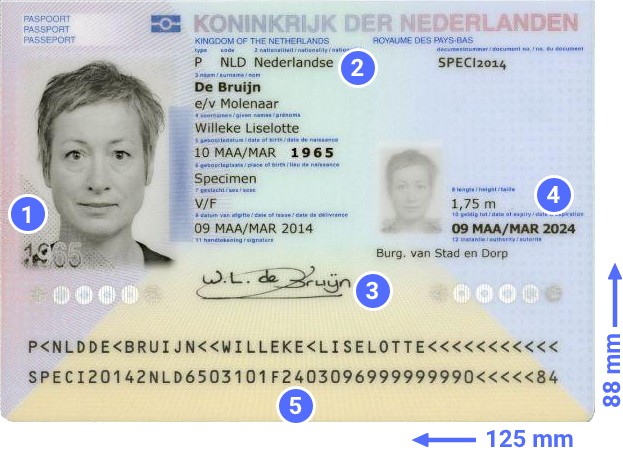
Producing fake passports has become a business for fraudsters. In 2016, nineteen people were arrested in Greece and the Czech Republic. They were involved in the production of bogus European Union Passports.
Here are some basic tips to spot a fake passport:
- It must have a digitally printed photograph of the holder with a holographic overlay (1).
- Code of Issuing State (2).
- The passport must feature the holder’s signature (3).
- It must have an expiry date printed (4).
- It must have a machine-readable zone (5).
- The passport should be the right size. Most passports must comply with the ISO/IEC 7810 ID-3 standard, which specifies a size of 125 × 88 millimeters (4.921 × 3.465 inches).
- Check out if the passport contains all the security features. Every country has its security features for passports such as holograms, unique fonts and colors, different sizes, watermarks, and more. Find security features listed in the PRADO system.
- Check out the number of pages available in the passport. E-Passports have 36 pages. Regular passports have 24-34 pages.
- Find out if personal information is forged. Try to ask questions about information in the passport, e.g. “When is your birthday?”, “In which city was your passport issued?”
- Find out the serial number throughout the pages.
- Use the PRADO system to find out if the model of the passport is still valid.
How to Spot a Fake Driving Licence?
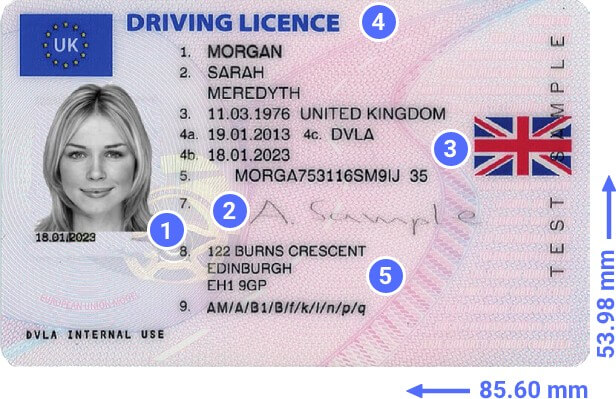
Driving license is a substantial identity proof in several countries of the world. Still, unfortunately, the production of fake driving licenses are on the rise.
Here are some steps that you can follow to spot a driving license’s authenticity in the initial stage:
- It must have a digitally printed photograph of the holder with a holographic overlay (1).
- No signature or incorrect signature (2).
- Since fake IDs are created in a hurry, they usually have spelling mistakes and incorrect flag images (3).
- Feel the surface of the license by running your thumb over the card. Fake IDs are often bumpy.
- Most fake driving licenses have plain backgrounds (4).
- You might find the information listed in the wrong place (5).
- Check out if the license contains all the security features. Every state has its security features for driving licenses such as holograms, unique fonts and colors, different sizes, watermarks, and more.
- The driving license should be of the right size. Most driving licenses have to comply with ISO/IEC 7810 ID-1 standard, which specifies a size of 85.60 × 53.98 millimeters (3.370 × 2.125 inches). Payment cards (debit/credit card) are the same size, use them for fast measurement.
- Use the PRADO system to find out if the model of the driver’s license is still valid.
So these are some of the basic things you can do to determine the common identity document frauds. Unfortunately, as technology is growing, fraudsters have also upgraded themselves. Technologies like deepfake, AI, and more have been used to falsify digital identities.
So, as a business owner, you also need to upgrade your identity verification solution.
How to Protect Your Business from Identity Theft?
Identity theft is one of the fastest-growing crimes in the world. According to a report, around 7 to 10% of the US population is an identity fraud victim. However, it doesn’t mean you can’t do anything to protect your business from identity theft and fake IDs.
You need to deal with the problem correctly. If you doubt that a client or customer presents you with a fake ID, you should immediately stop all the deals. You can ask the customer to hand over the ID to you and then call the police or responsible authority to investigate.
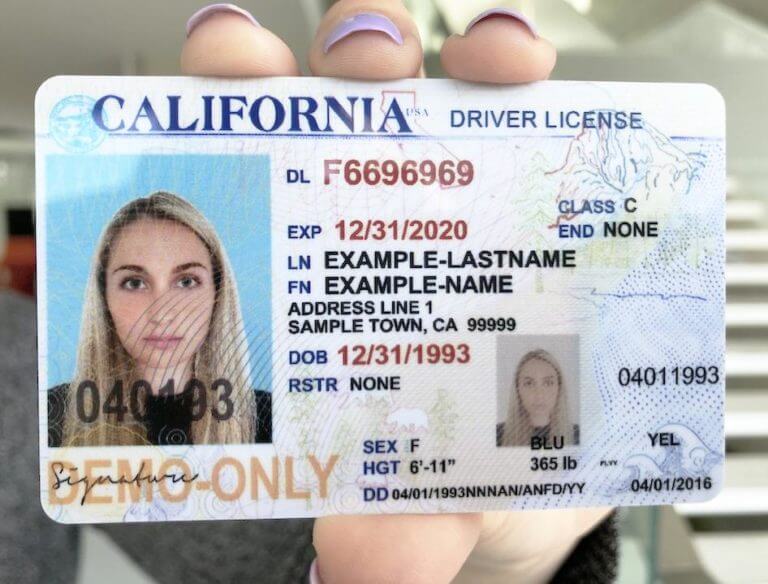
If you don’t want your business to be a victim of identity fraud, you must take preventive measures first. You need to invest in robust identity verification solutions like data scanning, facial recognition, liveness detection, and more. If you’re in a business where you have to check the identity documents of your customers remotely and frequently comply with Know Your Customer (KYC) and Anti-Money Laundering (AML) regulations, try out iDenfy’s identity verification solution.
At iDenfy, we can provide you with an advanced real-time identity verification solution that will automate your verification process. We have a complete compliance toolkit, including a Business Verification (or KYB) software for corporate client onboarding. It has other vital features, such as AI Risk Assessment for better risk mitigation and automated client risk scoring, including other measures, such as AML screening, proof of address verification, and more.
Let’s discuss your particular use case and how you’d like to customize your KYC flow to spot fraud and fake ID documents effortlessly.
